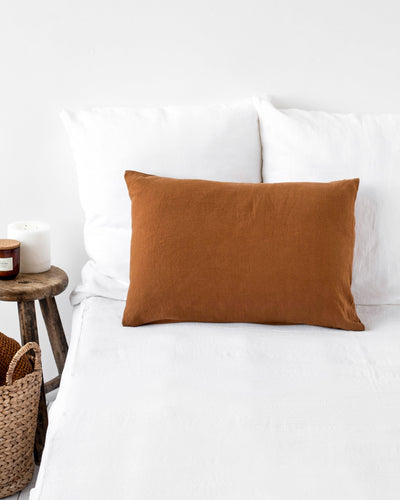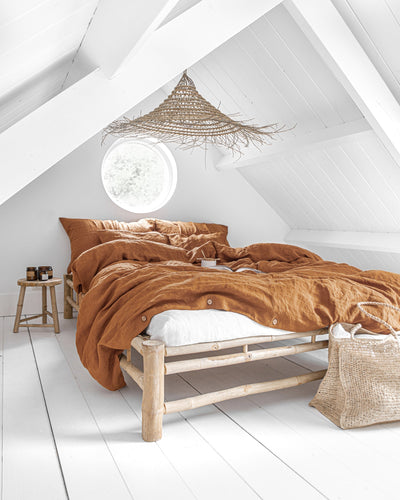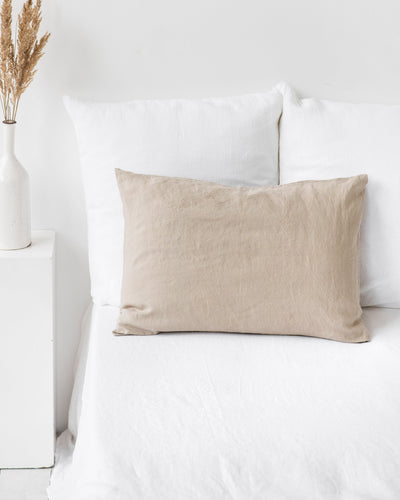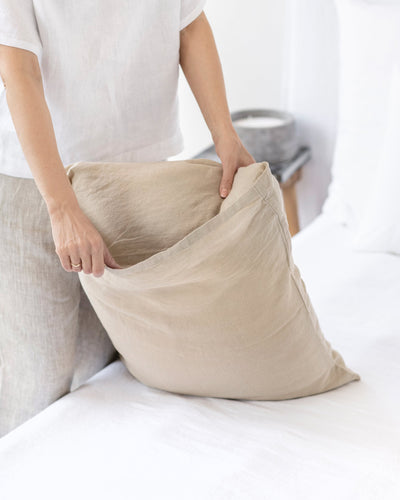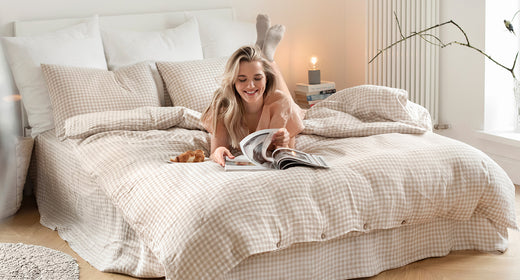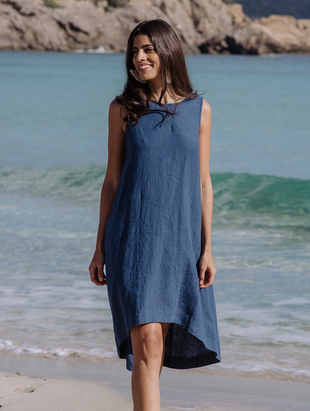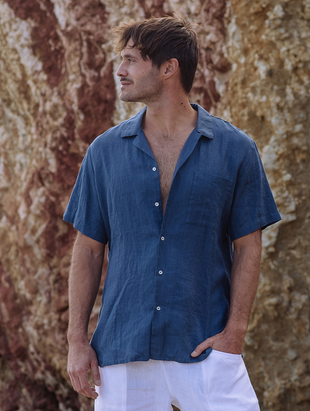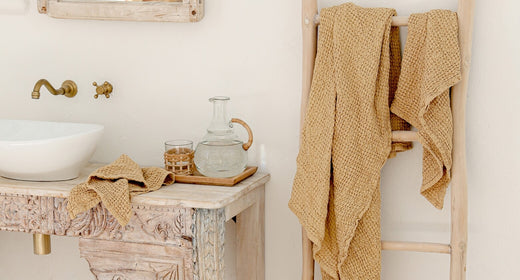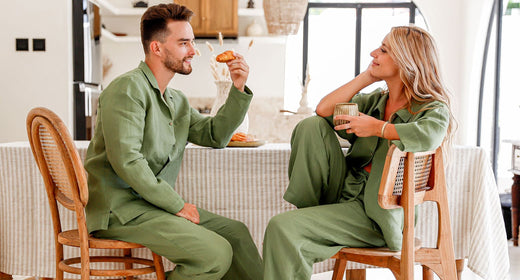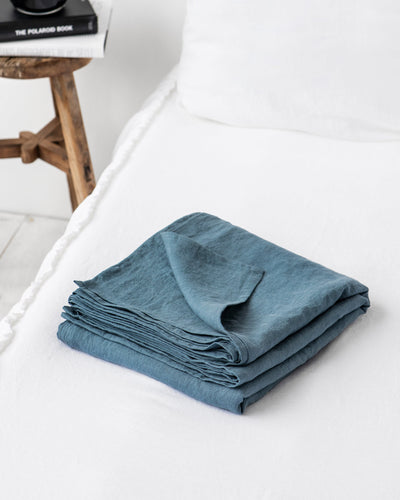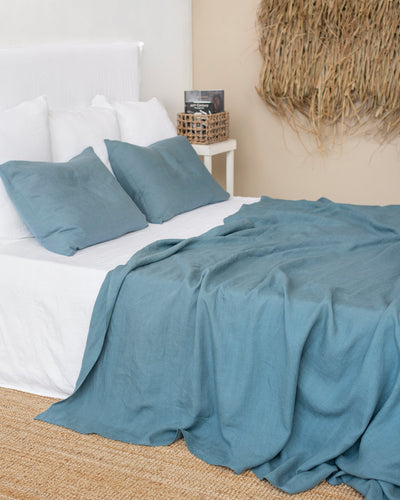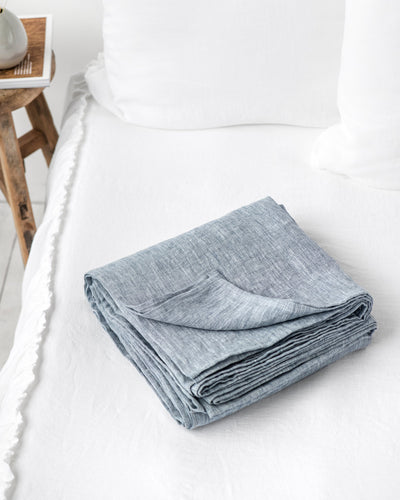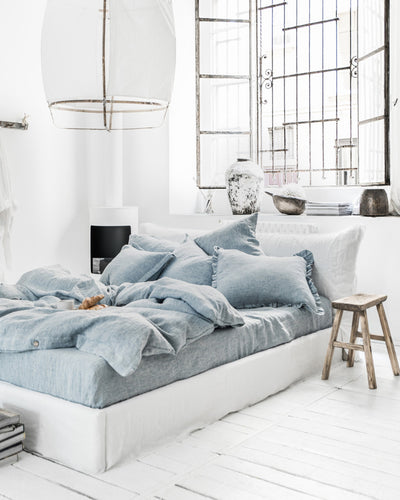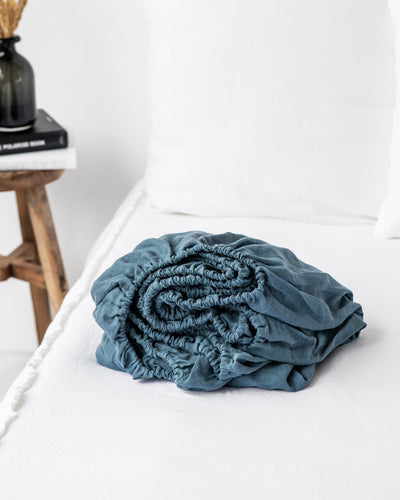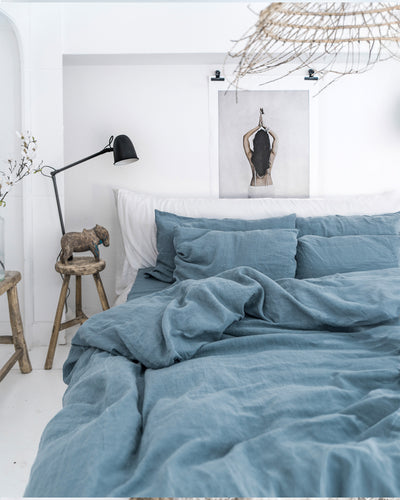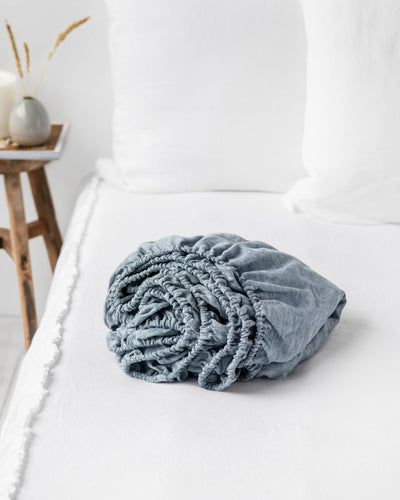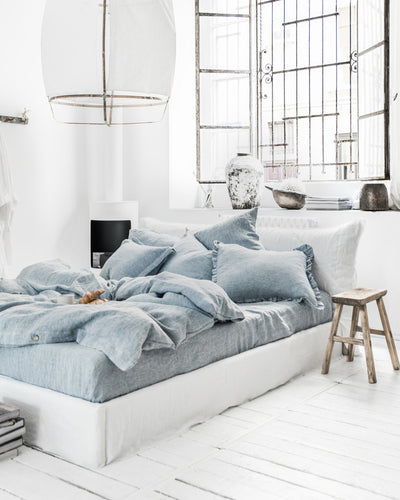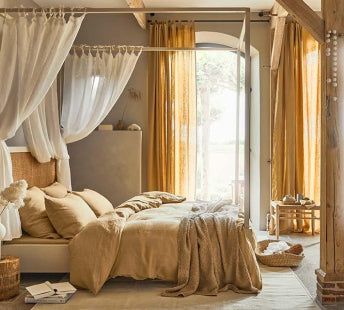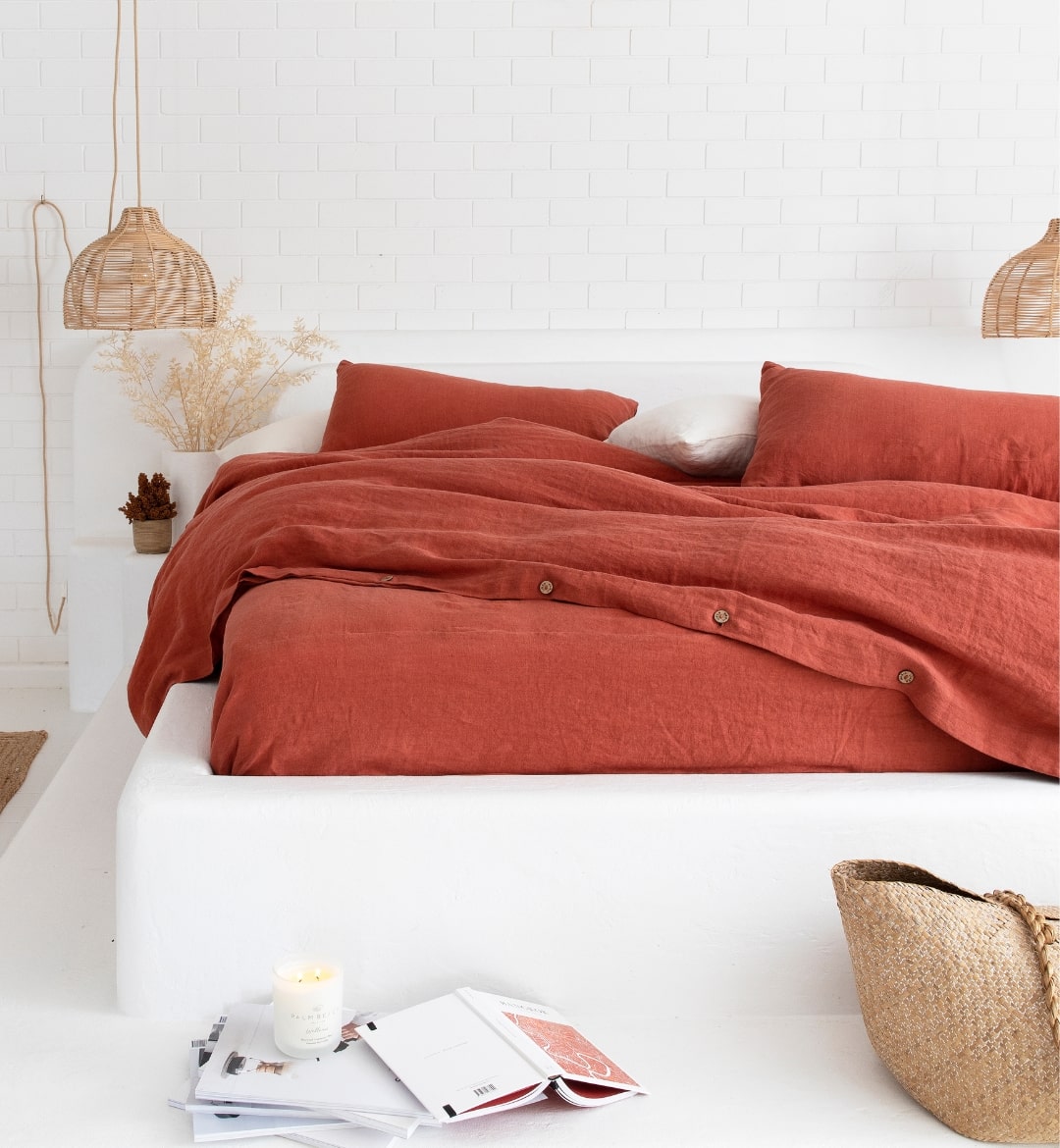
Flat Sheet vs. Fitted Sheet – Which Is Better?
When it comes to making a cozy, well-dressed bed, the question often comes up: flat sheet vs. fitted sheet – which one should I choose? While both serve essential roles in your bedding setup, each one has its own unique purpose, perks, and (let’s be honest) quirks.
Whether you’re someone who loves a perfectly tucked-in top sheet or you prefer to keep things simple with just a fitted one, choosing the right combination can make a big difference in how your bed feels—and how easy it is to maintain.
In this guide, we’ll break down the differences between the two, helping you decide which option suits your sleep style best.
Key Takeaways
- Flat sheets are versatile and can be used as a top layer or extra protection for duvet covers, while fitted sheets provide a snug, secure fit to keep your mattress clean and your bed neat.
- Flat sheets are easier to fold and quicker to launder but are more prone to wrinkles. Fitted sheets stay in place and resist wrinkles, but they can be more challenging to fold and may require extra care when washing.
- Flat sheets are popular in hospitality, healthcare, and casual settings for their flexibility and ease of maintenance. Fitted sheets are better for residential use, providing a smooth, secure fit for comfort and protection.
Difference Between Fitted and Flat Sheets
Before we explore which one might be best for your bed, let’s start with a simple question: “What is a flat sheet vs. a fitted sheet?” While they’re both essential parts of a bedding set, they serve different roles.
Flat sheets, also known as top sheets, are made from lightweight fabric and are typically tucked under the mattress for added coverage. Some people prefer to use them as an additional layer of protection for the duvet cover, placing them on top of the fitted sheet.
Fitted sheets are made with elasticized corners that grip your mattress snugly. Designed to stay put and act as the base layer of your bedding, they offer protection and a smooth sleep surface.


Though they’re both made for comfort, the real difference between flat and fitted sheets comes down to design, maintenance, and ease of use.
Design
Despite their shape resembling the mattress, a flat sheet and a fitted sheet are comparable in the corners of the fabric. While a flat sheet's corners are flat, the corners of a fitted sheet are elasticized, giving it some dimension.
Maintenance
When it comes to washing bed sheets, both flat and fitted sheets can be washed in a machine. However, it's important to note that care instructions may differ between the two. To avoid any confusion, always refer to the manufacturer's guidelines on the label.
In addition, flat sheets are more susceptible to wrinkling compared to fitted sheets. This means that they may require more ironing or smoothing to achieve a crisp finish. On the other hand, the elasticized corners of fitted sheets help reduce wrinkles, making them appear neater with less effort.
Use
You might think flat and fitted sheets are only meant to cover your mattress, but the former is more versatile. A flat sheet can be used as a top sheet, a layering piece, or an extra – usually seen in hotels. If you want to prevent your body oils from reaching your duvet covers, use a flat sheet to separate yourself from the rest of the bedding.
Advantages and Disadvantages of Each Sheet
Before deciding which one to choose for your bed, remember that each sheet has advantages and disadvantages.
Advantages of flat sheets

- Flat sheets are easy to fold due to their perfect rectangular shape.
- Flat sheets can be bigger than your bedframe yet still be used – simply tuck all the extra fabric under the mattress until it fits.
- Flat sheets are versatile as they can be used as a mattress cover or an extra layer for your bedding.
Disadvantages of flat sheets
- Flat sheets can easily slip off because they lack elastic ends that hug the mattress.
- Flat sheets might need frequent washing if used as an extra.
- Flat sheets get easily wrinkled since they don't sit tight while you sleep.
Advantages of fitted sheets

- Fitted sheets are designed to stay in place as their corners are specifically tailored to fit snugly around the mattress, ensuring a secure fit.
- Fitted sheets protect your mattress better since they embrace each corner tightly.
- Fitted sheets don't get as wrinkled because they are perfectly stretched over the mattress.
Disadvantages of fitted sheets
- Fitted sheets are tricky to fold because of their rounded corners. If you are aiming for a neat linen closet, knowing how to fold fitted sheets is a must.
- Fitted sheets must match the mattress size; otherwise, they won't fit.
- Fitted sheets may need additional washing care to protect the elastics from getting ruined.
Best Uses for Flat and Fitted Sheets
So, when should you use a flat sheet, and when does a fitted sheet make more sense? While both have a place in your bedding setup, certain scenarios bring out the best in each.
Flat sheets are especially popular in hospitality settings—and for good reason. But why do hotels use flat sheets instead of fitted? The answer is all about practicality. Flat sheets are quicker to launder, easier to dry, and simpler to fold and store in large quantities. Plus, they offer flexibility: one flat sheet can be used on various mattress sizes, whether is king size or queen size, or even doubled as a lightweight blanket in warmer weather.
Beyond hospitality, healthcare facilities (like hospitals and clinics) also lean toward flat sheets. In these environments, frequent bedding changes are a must. Flat sheets are quick to remove, easy to sanitize, and ideal for creating clean, hygienic surfaces with minimal fuss.
Fitted sheets are more common in residential and long-term care settings, where a snug fit and lasting comfort are key. They’re also widely used in childcare—cribs and toddler beds often have fitted sheets to ensure the bedding stays safely in place through naps and nighttime wiggles.
In the rental and vacation property space, hosts tend to mix both styles: fitted sheets for simplicity and a flat sheet for that layered, hotel-like touch guests appreciate.
At home, the choice often comes down to personal preference. Love a crisp, tucked-in look with a top layer between you and your duvet? Go for the flat sheet. Prefer something that stays put and requires less daily effort? Fitted sheets are your best friend.
What’s Better, Flat or Fitted Sheets?

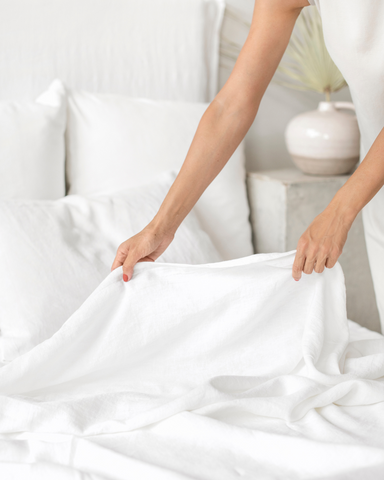
Choosing between a flat sheet and a fitted sheet can be a daunting task, as your choice can affect your sleeping comfort. Would you rather have the snug fit and sleek surface of a fitted sheet or the extra protective layer and flexibility of a flat sheet?
When making your choice, it is essential you keep the disadvantages in mind as well. Flat sheets tend to slip off at night unless they are firmly secured under the mattress. This can be frustrating for some people. On the other hand, fitted sheets require additional washing and are challenging to fold. Therefore, it is crucial to consider your preferences and weigh the pros and cons of each option. This will help you make the right decision for a restful night's sleep!
Wrapping Up
When it comes to choosing bed sheets, there is no universal solution that works for everyone. The choice between a flat or a fitted sheet is mainly determined by practicality and personal preference. You can opt for either a fitted or a flat sheet, or even a combination of both, depending on what suits your comfort, style, and overall preference.
Frequently Asked Questions (FAQs)
Do you really need both sheets?
You can certainly use just one—either a fitted or flat sheet—but having both can offer added comfort and convenience. The flat sheet helps keep your blanket or duvet cleaner, while the fitted sheet ensures a smooth, secure fit on your mattress.
Can you use a flat sheet as a fitted sheet?
Yes, you can use a flat sheet as a fitted sheet. When using a flat sheet for your mattress, ensure the four corners are firmly wrapped so it doesn't move as much.
Why does my fitted sheet keep coming off?
Fitted sheets can come off for various reasons, such as inadequate placement, movement during sleep, or loss of elasticity. To avoid any slip-offs, spread the sheet promptly over the mattress. If you constantly adjust the sheet despite these factors, it might be time to purchase a new one.
 United States
United States


